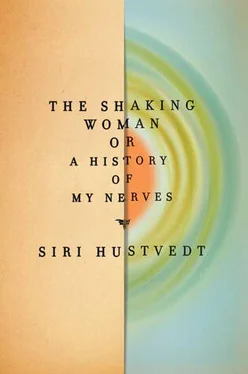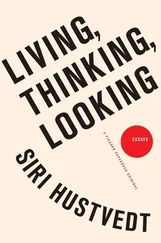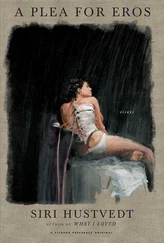In The Ego and the Id (1923) Freud writes, “The question ‘How does a thing become conscious?’ would thus more advantageously be stated, ‘How does a thing become pre-conscious [available to consciousness]?’ And the answer would be ‘through becoming connected to the word presentations corresponding to it.’ ” Further, he says, these words are “residues of memory.” He does not deny that visual imagery is part of the remembered mental world, but he argues that it has another character, that being conscious of an optical memory is more concrete and that “the relations between the various elements of the subject matter, which especially characterizes thought, cannot be given visual expression. Thinking in pictures is, therefore, only a very incomplete form of becoming conscious. In some way, too, it stands nearer to unconscious processes than does thinking in words, and it is unquestionably older, both ontogenetically and phylogenetically.” 60It is striking how well Freud’s distinction between the visuospatial and the audioverbal tallies with research gleaned from split-brain patients. Luria’s study also illuminates the difference between the visual and the verbal. Through his language lessons, Twin A gained the thought mobility that comes with the remembered word presentations Freud described, while Twin B remained locked inside the far more concrete, noun-based language he shared with his brother, which hampered the development of his mind.
Some memories can easily be brought to consciousness. Others have grown vague or appear only in fragments. I remember a gesture — putting my glasses down on a table, but which table? Sometimes I walk downstairs to get those same reading glasses, but by the time I arrive at my destination, countless other thoughts have intervened, and I have forgotten what I wanted. Only after I’ve retraced my steps — climbed to the second floor again and returned to where I came from — can I remember what my mission was. The memory returns only when I repeat the movement. Once, I was looking at a crack in my coffee cup and it triggered a memory of another flaw in some other vessel I felt sure I had seen recently. I couldn’t say what I was remembering — a conversation, a painting, a passage in a book — and then, all at once, I recognized that the image came from a dream, the rest of which had vanished entirely. Not long ago, my friend H. reminded me of an unpleasant but not traumatic experience I had many years ago while the two of us, then eighteen, were traveling in Europe. We found ourselves at a party. I was talking to a young man in one of the rooms of the apartment when, without warning, he threw himself at me. I fought him off, and H. and I fled. I had not thought about this brief mauling for years, and even now the memory is fractured and incoherent — a dim recollection of struggle, fear, and relief. The truth is, I don’t really like remembering this particular event. It was completely outside my awareness until H. revived it. What Freud called repression involves memories that remain unconscious because the patient doesn’t want to know about them but that then can be brought back to consciousness through the analytic process, the talking cure, which allows the speaking subject, the I, to reown the experience.
Scientists distinguish among semantic, procedural, and episodic memories. Semantic memory includes much that I know about the world, from the fact that glass will break to how skunks smell to Kierkegaard’s ideas about the aesthetic. Procedural memory is implicit. I get on my bicycle and go because my body has learned how to ride it and thinking is no longer necessary. This corresponds to Merleau-Ponty’s schéma corporel and Gallagher’s body schema . Episodic memory, on the other hand, is explicit. It is owned by a self-conscious “I.” It is literally re-collection, the act of bringing bits of the past into present consciousness. Much of this takes linguistic form, is self-reflective, and therefore makes it possible for me to see myself in myself but also to regard myself as if from afar — as someone else might see me. It allows me to speculate as David Copperfield does in the first sentence of the Charles Dickens novel that bears his name: “Whether I shall turn out to be the hero of my own life, or whether that station will be held by anybody else, these pages must show.” 61
In my writing work with psychiatric patients, I have often used a book by the poet and visual artist Joe Brainard called I Remember . This slim but extraordinary volume is a catalog of the author’s memories. Every entry begins with the words “I remember”:
I remember that I never cried in front of other people.
I remember how embarrassed I was when other children cried.
I remember the first art award I ever won. In grade school. It was a painting of a nativity scene. I remember a very large star in the sky. It won a blue ribbon at the fair.
I remember when I started smoking I wrote my parents a letter and told them so. The letter was never mentioned and I continued to smoke. 62
When the patients and I write our own “I remembers”, something remarkable happens. The very act of inscribing the words I remember generates memories, usually highly specific images or events from the past, often ones we hadn’t thought about for many years. Writing the words I remember engages both motor and cognitive action. Usually I do not know how I will finish the sentence when I begin it, but once the word remember is on the page, some thought appears to me. One memory often leads to another. An associative chain is engaged:
I remember when I thought I had ugly knees.
I remember the man who told me my knees were beautiful.
I remember that after that, I never thought they were ugly again.
My hand moves to write, a procedural bodily memory of unconscious knowing, which evokes a vague feeling or sense of some past image or event emerging into consciousness. Then the episodic memory is present and can be articulated with startling suddenness. No matter how minute, comic, or sad their memories may be, the writers in my class inevitably find pleasure in extracting small nuggets from their mental gold mines. The most vivid memories emerge, seemingly from nowhere. There is no given theme. All memories are welcome. After this exercise, many of my students have left the class astonished. “I haven’t thought about that for years,” they say or “I had forgotten all about Uncle Fred’s three-legged cat until just now.” Because emotion consolidates memory, the reminiscences are rarely neutral — they are often rich in the subtleties of feeling. The written incantation I remember is vital as a catalyst. It assumes ownership of what is to come. This is mine, and even though it is difficult to explain how these recollections emerge from hidden depths into the light of day, once they have arrived, they belong to the writer, and for a psychiatric patient being treated in a hospital, for a person who is often overwhelmed by an illness that makes it difficult to integrate the various pieces of himself, who feels he is falling apart, the words I remember are in themselves therapeutic. They seem to initiate a brief, coherent inscribed memory. Joe Brainard discovered a memory machine.
Writing I remember appears to function differently from just saying the words I remember . I was intrigued to come across the case of a thirteen-year-old boy, identified by the pseudonym Neil, in a paper published in Brain in 1994. After being treated with radiation for an invasive brain tumor, Neil continued to speak fluently, but his reading ability gradually deteriorated over a period of two years, until his alexia was total; he could not read at all. He developed vision problems, had trouble naming familiar objects and identifying faces, and although he had a detailed memory of his life before his tumor and the treatment, he was unable to recall his life afterward. When one of the researchers queried him about his everyday memory failures, Neil said, “If I ask the teacher a question, by the time she has answered me, I have forgotten what I have asked.” The boy could, however, make elaborate, careful drawings of things and scenes, some of which were reproduced in the article — a Christmas tree, a rabbit in a yard, a juice bottle and a corkscrew — even though he couldn’t identify them. It eventually became clear that while Neil had no memory of his world that he could talk about, he could remember what had happened to him when he wrote it down, despite the fact that he was unable to recall or read back what he had written. His memory appeared to exist solely in a mind-hand motor connection. For example, in response to his mother’s question about what he had done in school that day, he wrote for her, “Today in school I watched the film my left foot (My Left Foot). I also had geography. I saw [name of the teacher] and he was very pleased. Miss [name of the teacher] is going to give us a note about activities in the holidays.” When his mother asked him if he had enjoyed seeing the film, he said, “What film?” The authors of the paper also noted that, through writing, Neil was better able to recover meaningful memories — his experiences with friends and family — than the neutral lists of words that the researchers would test him on. Neil’s postmorbid, exclusively orthographic memory was enhanced by emotion, just as it is for the rest of us who have normal recall for events. My hand moves as I write the words I remember, and the act itself seems to initiate recollections. As he traced the letters onto a page, Neil was able to inscribe what the rest of him had forgotten. The talking Neil had amnesia. Neil’s writing hand did not. 63
Читать дальше












